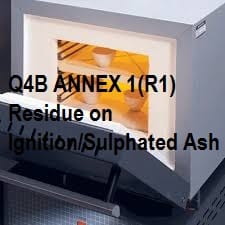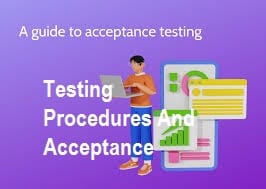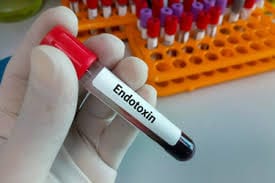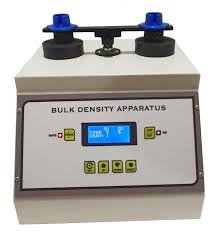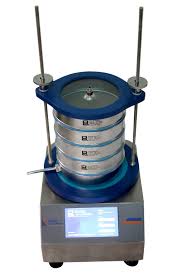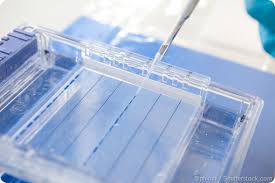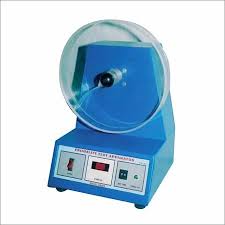|
Getting your Trinity Audio player ready... |
Q4B ANNEX 1(R1) Residue on Ignition/Sulphated Ash General Chapter
1. Introduction: Residue on Ignition
Residue on Ignition: The annex presented here represents the outcome of the Q4B process for Residue on Ignition and Sulphated Ash. This process aims to harmonize the requirements of the pharmaceutical industry across different regions, ensuring consistency and facilitating global standardization.
The proposed textual amendments and harmonization efforts were initiated by the Pharmacopoeial Discussion Group (PDG), which is a collective of experts from different regional pharmacopoeial organizations working toward global alignment of pharmaceutical quality standards. The goal of this annex is to clarify how the Residue on Ignition (ROA) and Sulphated Ash tests, which are commonly used to determine the inorganic residue left after the combustion of a substance, can be universally applied across various regions while adhering to regional regulatory guidelines.
2. Q4B Outcome
The Q4B process is an initiative under the International Council for Harmonisation of Technical Requirements for Pharmaceuticals for Human Use (ICH), aimed at facilitating the use of common standards across different regions for pharmaceutical testing methods. This annex discusses the recommendations put forward by the ICH Steering Committee, based on the evaluation performed by the Q4B Expert Working Group (EWG), which have implications for the interchangeability of specific pharmacopoeial methods used for the Residue on Ignition and Sulphated Ash tests.
2.1 Analytical Procedures
One of the primary outcomes of the Q4B evaluation is the recognition that the official pharmacopoeial texts from different regions—the European Pharmacopoeia (Ph.Eur. 20414), the Japanese Pharmacopoeia (JP 2.44), and the United States Pharmacopeia (USP <281>)—are interchangeable for the purposes of Residue on Ignition and Sulphated Ash tests. This interchangeability is recommended under the following conditions:
- Sample Weight: Unless otherwise specified in a monograph, an appropriate sample weight should be chosen for testing. Typically, a sample weight in the range of 1 to 2 grams is recommended. This amount should result in a residue that is sufficient to be accurately measured by weight (typically to an accuracy of 1 mg). In cases where a specific sample weight is not indicated in the monograph, the manufacturer or sponsor must justify their choice of sample weight in the application dossier, specifying both the sample weight and the acceptance criteria.
- Calibration of the Muffle Furnace: The muffle furnace used for conducting the test should be appropriately calibrated to ensure compliance with regional Good Manufacturing Practice (GMP) requirements. This is necessary to guarantee the reliability and consistency of the results obtained from the test. Proper calibration ensures that the furnace is functioning within the required temperature range and that it can provide consistent results across different testing conditions.
2.2 Acceptance Criteria
During the evaluation process, it was noted that the proposed texts for Residue on Ignition and Sulphated Ash did not contain explicit acceptance criteria. While acceptance criteria are essential in many pharmacopoeial tests to ensure that the results meet the necessary quality standards, this omission in the proposed texts highlights the need for regional authorities to adapt and incorporate specific criteria into their guidelines or monographs as applicable.
Acceptance criteria for any analytical test typically specify the allowable limits for a substance’s residue, ensuring that it falls within acceptable thresholds. For instance, for the Residue on Ignition test, this could involve limits on the amount of inorganic residue left after combustion, while for Sulphated Ash, it could refer to the amount of ash after treatment with sulfuric acid. The absence of such criteria in the texts evaluated by the Q4B EWG suggests that further discussion may be required among regulatory authorities to establish uniform criteria.
3. Timing of Annex Implementation
The implementation of this annex will be carried out in stages across the different ICH regions. Once this annex is incorporated into the regulatory process at ICH Step 5, it will become available for use in the respective regions. However, the timeline for its implementation may vary across the regions, as different regulatory bodies may require different timelines to update their national pharmacopoeias or regulatory guidelines to accommodate these changes.
Each region will need to evaluate the proposed texts in light of their own specific regulatory framework and make necessary amendments to ensure the smooth adoption of the standardized procedures. The exact timing of the annex’s adoption will depend on the readiness of the individual regions to implement the changes and adapt to the new requirements.
4. Considerations for Implementation
The successful implementation of the harmonized approach outlined in this annex requires careful consideration of several factors. These factors include regulatory processes, the transition from old to new methods, and the potential impact on manufacturers and sponsors. The following subsections highlight key considerations for the implementation of the annex in different regions.
4.1 General Consideration
For sponsors and manufacturers who may need to transition from their current testing methods to those defined by the Q4B-evaluated pharmacopoeial texts, it is crucial that any changes be managed in accordance with the established regulatory mechanisms of the relevant regions. Regulatory bodies often have specific procedures for handling changes to compendial standards, including requirements for change notifications, variations, and prior approval processes.
These procedures must be followed carefully to ensure that all adjustments made to testing methods are in compliance with the regional regulatory frameworks. Sponsors and manufacturers should be prepared to provide any necessary documentation or evidence demonstrating that the new methods, based on the Q4B-evaluated pharmacopoeial texts, are suitable for their specific materials or products.
4.2 FDA Consideration
In the United States, the Food and Drug Administration (FDA) may accept the use of the pharmacopoeial texts referenced in Section 2.1 of this annex as interchangeable, provided the conditions outlined in the annex are met. However, the FDA may request that a company demonstrate that the chosen method is appropriate and suitable for a particular material or product, regardless of the method’s origin.
This means that while the methods from different pharmacopoeias are considered interchangeable in principle, the FDA may require additional validation or justification that the method is applicable to a specific product or material. Manufacturers should be aware of this potential requirement when transitioning to the new methods defined by this annex.
4.3 EU Consideration
In the European Union, the monographs of the European Pharmacopoeia (Ph. Eur.) are considered mandatory. However, regulatory authorities in the EU may accept references to Residue on Ignition and Sulphated Ash tests from other pharmacopoeias as referenced in Section 2.1, provided the conditions set out in this annex are followed. This allows manufacturers to use methods from pharmacopoeias other than the Ph. Eur. as long as they meet the necessary criteria for interchangeability.
When submitting a marketing authorization application, renewal, or variation application in the EU, manufacturers may cite the use of corresponding texts from another pharmacopoeia as fulfilling the requirements for compliance with the Ph. Eur. chapter on Sulphated Ash (20414). This flexibility is important for harmonizing testing methods across different regions and ensuring that companies can efficiently comply with international standards.
4.4 MHLW Consideration
In Japan, the Ministry of Health, Labour and Welfare (MHLW) will also consider the pharmacopoeial texts referenced in Section 2.1 of this annex as interchangeable, as long as the conditions outlined in this annex are met. When the annex is implemented in Japan, MHLW will provide specific details regarding the requirements and timelines for adoption.
Manufacturers in Japan should remain vigilant and monitor for any official notifications from MHLW, as these will provide further guidance on how to implement the new standardized methods in compliance with regional regulations.
4.5 Canada Consideration
In Canada, any of the pharmacopoeial texts cited in Section 2.1 of this annex can be considered interchangeable, provided they adhere to the conditions outlined in the annex. This approach is similar to that of other regions, ensuring that Canadian manufacturers can use standardized methods from different pharmacopoeias as long as they meet the necessary criteria for interchangeability.
5. References Used for the Q4B Evaluation
The Q4B evaluation process draws on a range of documents and pharmacopoeial references to ensure that the harmonized methods are based on accurate and up-to-date information. Some key references for this evaluation include:
5.1 PDG Stage 5B Sign-off Document
The PDG Stage 5B sign-off document is a critical reference for the evaluation process. It was published in the Japanese Pharmacopoeial Forum (Volume 14, Number 4, December 2005). This document outlines the discussions and agreements reached by the PDG on the proposed methods and their standardization across different regions.
5.2 Pharmacopoeial References for Residue on Ignition/Sulphated Ash
The pharmacopoeial texts for Residue on Ignition and Sulphated Ash that were used for this annex include:
- European Pharmacopoeia (Ph. Eur.): The relevant text is Supplement 5.6, which became official in January 2007 (reference Sulphated Ash 01/2007:20414).
- Japanese Pharmacopoeia (JP): The relevant method for Residue on Ignition is found in JP 2.44, as it appeared in the Fifteenth Edition (March 31, 2006, Ministry of Health, Labour and Welfare Ministerial Notification No. 285).
- United States Pharmacopeia (USP): The relevant method for Residue on Ignition is found in USP <281>, which became official in USP 29, 2nd Supplement, August 2006.
These references provide the foundational texts that guide the harmonized approach to Residue on Ignition and Sulphated Ash testing across different regions.
